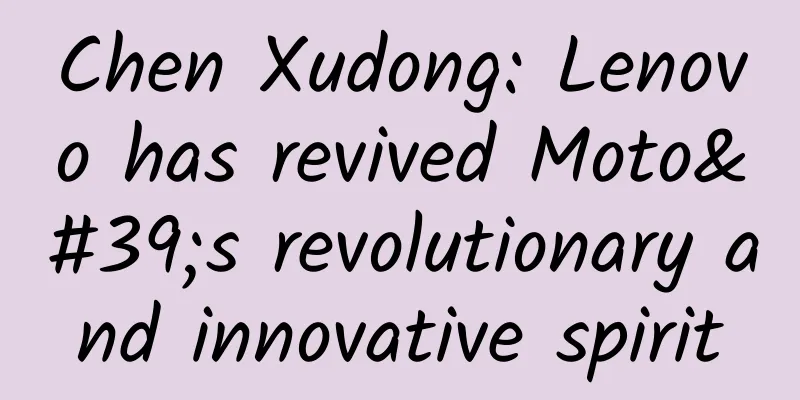Give it a little power, it can stay bright for a long time

|
Produced by: Science Popularization China Author: Wang Zhaofeng (Lanzhou Institute of Chemical Physics, Chinese Academy of Sciences) Producer: China Science Expo When we rub our hands together, we feel the warmth. When we comb our hair with a plastic comb, the hair not only flies up due to static electricity, but sometimes it also hits our hands. These are the effects of friction that are common in our lives. However, have we ever observed the blue flash of a candy bar being smashed in the dark or the tape being torn in the dark? The glow of a crushed mint candy (Image source: Reference [1]) The phenomenon of light emission caused by mechanical external forces (such as friction, scratching, impact, compression, grinding, etc.) is called triboluminescence. In fact, as early as more than 400 years ago, this phenomenon of light emission caused by external force stimulation has been observed by humans and recorded in relevant monographs. However, due to the limited understanding of triboluminescence at the beginning and the lack of experimental conditions, the research process of triboluminescence was extremely slow, so that it was not well known. This is a simple application of friction/mechanical luminescence in an American Indian tribe. Crystal fragments are placed in a translucent cowhide bag rattle. When the rattle is shaken, the crystal fragments glow due to collision, but this glow is not long-lasting and therefore has not been widely used. (Image source: Wikipedia) In recent decades, triboluminescence research has made rapid progress, especially triboluminescence materials can directly link the applied invisible mechanical information with the luminescence signal visible to the naked eye, showing great application prospects in green lighting, mechanical display and sensing, smart wearables, structural health monitoring, smart skin and anti-counterfeiting, providing innovative and effective solutions for breakthroughs in wireless, non-contact, distributed mechanical display and sensing technologies. While triboluminescence brings convenience to social progress, people also put forward higher requirements for its performance. Generally, triboluminescence is a transient luminescence behavior, that is, triboluminescence can only be generated at the moment we touch the material. But there is no doubt that this transient luminescence behavior has great limitations, and people cannot achieve continuous lighting and display functions, which is one of the reasons why triboluminescence has been slow to develop for a long time. Triboluminescence only lasts for a moment and is not long-lasting (Image source: Wikipedia) Long-life triboluminescence, that is, the phenomenon of continuous luminescence after mechanical stimulation, is an effective way to solve the problem of transient luminescence of triboluminescence . The researchers introduced a structure called "trap" into the material, which is like a tank that can store energy. As long as these energy tanks are filled in advance and the pre-stored energy is slowly released under the action of mechanical force, long-lasting triboluminescence can be generated. However, this type of long-life luminescent material must be pre-charged for a certain period of time (5-20 minutes) before each use, which greatly increases the difficulty of actual operation. So, is there a material that can exhibit long-life triboluminescence without pre-charging? Recently, researchers from the Lanzhou Institute of Chemical Physics, Chinese Academy of Sciences, have innovatively developed a self-charging, long-life triboluminescent material. This material does not require any pretreatment before use. Under the drive of mechanical force, mechanical energy can be directly stored inside the material, and the stored energy will be slowly released, thus showing a long-life triboluminescent effect. Just "tap" the material and it will light up for more than ten seconds. (Image source: Reference [2]) This self-charging, long-life triboluminescent material is an elastomeric property. When preparing it, researchers only need to use different molds to make it into various shapes with colorful patterns. The reason why it no longer needs pre-charging is that the "valve" of the "energy storage tank" inside the material has been improved. The mechanical energy applied by the researchers to the material can be directly charged into the "energy storage tank", and then the energy is slowly released to produce long-life triboluminescence. Therefore, this material no longer needs the step of pre-charging. Applying force to the material anytime and anywhere can keep it lit for a period of time. In the future, people can continue to improve the "energy storage tank" structure of the material. In that case, if a little force is applied to the material, it can light up for several hours or longer. By then, human lighting and display will no longer need to consume electrical energy, but can be realized by using clean energy such as wind energy and tidal energy that are widely present in nature, as well as mechanical energy accompanying human life production such as human movement and machine operation, which can not only save energy and reduce emissions, but also ensure the human life happiness index. In addition to the application in the new generation of lighting and display, the researchers, inspired by the physical process of self-charging and long-life friction/mechanical luminescence, have further realized the long-term, stable storage of mechanical information and its reading anytime and anywhere. For example, in life, when instruments, equipment or vehicles such as cars collide, we can read the intensity, location, time and other information of the collision from the material, thus providing a scientific basis for analyzing instrument failures, equipment damage assessment, accident responsibility assessment, etc. References: [1] Monette Z, Kasar AK, Menezes P L. Advances intriboluminescence and mechanoluminescence[J]. Journal of Materials Science:Materials in Electronics, 2019, 30(22): 19675-19690. [2] Bai Y, Guo X, Tian B, Liang Y, Peng D, Wang Z. Self-Charging Persistent Mechanoluminescence with Mechanics Storage andVisualization Activities[J]. Advanced Science, 2022, 2203249. |
<<: To be honest, you may really not understand much about eating staple foods!
Recommend
Why are your left and right hands symmetrical? The Egyptian Sphinx gives the answer...
Why life prefers a certain chirality is a profoun...
Can drinking a cup of honey water every day really improve your skin and relieve constipation? Don’t worry, here’s the truth!
In daily life, we often hear various tips for kee...
Android soft keyboard control method and some problems encountered in development.
Android provides the windowSoftInputMode property...
What is the value of KOL? How do operators tap into KOLs?
KOL is a concept in marketing , which means key o...
Long article with useful information | This article teaches you how to write popular user cases!
User cases are common promotional materials, and ...
Different stages of development: Apple standards should not be used to require domestic mobile phones
[[130953]] The reason why I found this article af...
In addition to star anise, the health benefits of kitchen ingredients include these...
Recently, the statement that "Tamiflu, a spe...
Brain-computer interface technology helps humans realize "mind communication", how far are we from the cyborg world?
After a stroke, brain damage leads to limb paraly...
Guangdiantong Advertising Creative Optimization Operation Guide
This article will bring you the specific steps fo...
Cherry House Buying Training 2
Cherry House Buying Training 2 6 VIP privileges a...
Tantan Pan Ying: How to create an algorithm-based "face value" social platform
Editor’s Note: "It is a great thing for wome...
The only meaning of community operation
In the past three or four years, the growth rate ...
What is Baidu Domination? Let me teach you how to get on the homepage with Baidu Domination.
What is Baidu Domination? Let me teach you how to...
A dragon has nine sons. Why are some of them lions and some are snails?
The dragon, one of the "Four Spirits" i...
Why do only Chinese people like to drink hot water? Is "drinking more hot water" really useful?
Drinking hot water seems to be a tradition deeply...









